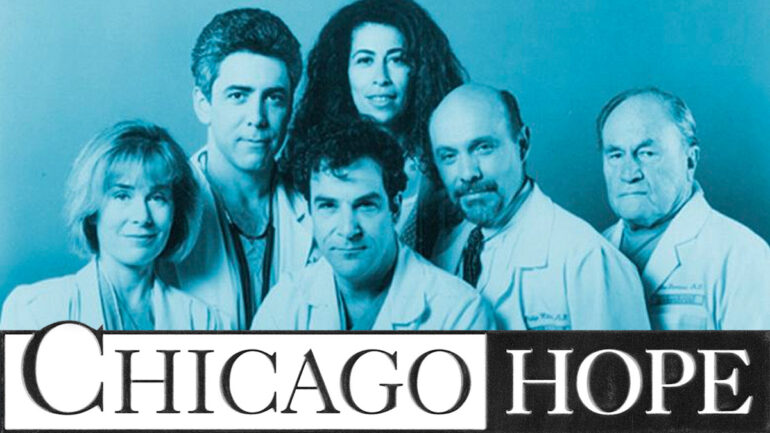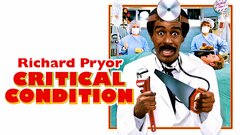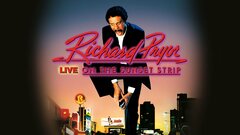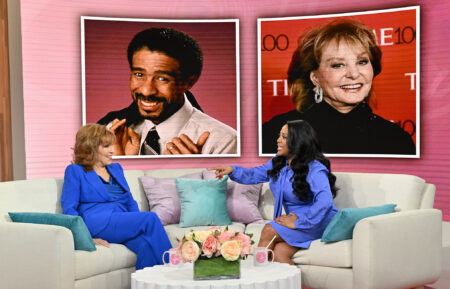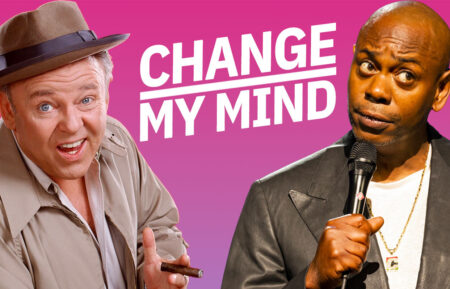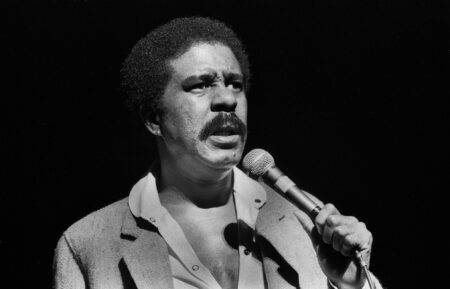Exploiting his own life experiences with a brutal honesty, which he delivered in a profanity-laced urban lyricism, Richard Pryor was arguably the most influential and groundbreaking comedian of his generation. Emerging from a youth of violence and abuse, Pryor used that history to inform his comedy, more as a raconteur than as a traditional teller of jokes. His material was profane and socially astute, provoking thought as well as laughter.
As a writer, he earned an Emmy, in addition to five Grammy Awards for his comedy albums. Although a veteran of more than 40 feature films, Pryor's creative apex came with the seminal performance movie "Richard Pryor Live in Concert" (1979). Then, at the height of his fame and in the depths of a debilitating drug addiction, Pryor nearly died after lighting himself on fire while he "freebased" cocaine in 1980.
To the astonishment of many, he rose like a phoenix from the ashes and went on to become one of the biggest movie stars of the day in films like "Stir Crazy" (1980) and "Richard Pryor: Live on the Sunset Strip" (1982). The rebirth was short-lived, unfortunately, after the effects of multiple sclerosis began to erode his once formidable ability, beginning in 1986 and ultimately debilitating the comedian by the end of the decade.
Cited as a major influence by the likes of Eddie Murphy and Chris Rock, Pryor not only expanded the definition of comedy, but also the social and racial boundaries that had previously defined its audience.
Born Richard Franklin Lennox Thomas Pryor in Peoria, IL on Dec. 1, 1940, he was the only son of Leroy and Gertrude Pryor. His parents, along with his grandmother Marie, operated several bars and brothels in Peoria, an area long known as a popular stop on the vaudeville circuit of the mid-century. Pryor's childhood was one of Dickensian hardship, updated to an urban America of the 20th Century.
His father, who beat his mother frequently in front of him but paid little attention to his son, left them while Pryor was a small boy. He was sexually abused at age six, abandoned by his mother and raised by his ill-tempered grandmother by age 10, and expelled from school by the age of 14. After a series of menial jobs in his later teens, Pryor enlisted in the U.S. Army and was stationed in Germany for a tumultuous two-year stint before being arrested and discharged after stabbing another serviceman during a racially charged altercation. After returning to Peoria, marrying and fathering his first child, a restless Pryor began performing stand-up comedy in local clubs, leaving his newly formed family behind for extended periods of time. Eventually, his stage reputation earned him a tour on the so-called "chitlin circuit," where he emceed and performed in various black venues along the East Coast throughout much of 1962.
Having honed his craft on the road, Pryor made the jump to New York City in 1963 and established himself as a successful performer in venerated Greenwich Village nightclubs like Papa Hud's and the Bitter End. A young performer who was still finding his voice at the time, Pryor, who idolized comedian Bill Cosby, kept his own early material just as safe and non-confrontational as the veteran comic he so admired. In this manner, Pryor made his national television debut on the Rudy Vallee-hosted musical variety show "On Broadway Tonight" (CBS, 1964-65) and was later seen as a regular performer on the similarly themed "Kraft Summer Music Hall" (NBC, 1966).
Pryor's career was picking up momentum, and in 1966 he made his television acting debut in an episode of the Western adventure series "The Wild Wild West" (NBC, 1965-69). His stand-up act, however, was his true bread and butter, and soon he began making the rounds with appearances on several popular variety and talk programs of the day, including "The Pat Boone Show" (NBC, 1966-67), "The Joey Bishop Show" (ABC, 1967-69), and the big one, "The Ed Sullivan Show" (CBS, 1948-1971). Pryor was now a nationally recognized comedian, regularly performing on TV and at high-profile venues in entertainment hot spots like Las Vegas, NV.
But despite his success, there was something troubling the young funnyman.
In 1967, while performing on stage at the Aladdin Hotel in Las Vegas, Pryor experienced what he would later describe as an epiphany. Suddenly realizing that he had not been true to the realities of his past, and that much of his current material essentially equated to a polite lie, the comic allegedly asked a stunned audience, "What am I doing here?" before storming off stage. From that point on, he would eschew the comedic status quo in favor of giving voice to a form of humor that rang true to his own personal, often unsettling experiences. Against the advice of many industry friends, Pryor began reshaping his material into something that reflected his current world view, even going so far as working the taboo slang term of "nigger" into his comedic vernacular. Later that same year, he unveiled this new approach on the self-titled 1967 debut comedy album, Richard Pryor.
Moving forward on all fronts, he made his feature film debut as an actor with a small part in William Castle's comedy, "The Busy Body" (1967), followed by a turn as the militant drummer, Stanley X, in the bizarre youth culture comedy "Wild in the Streets" (1968). In a reflection of the times, Pryor moved to Berkeley, CA in 1969, where he became heavily involved in the counterculture and socialized with cutting-edge black writers and intellectuals like Ishmael Reed and Cecil Brown.
In the years that immediately followed, Pryor moved to Los Angeles, where he continued to hone his stage act, recorded another comedy album - the then-underappreciated Craps (After Hours) - and picked up a string of guest spots in several TV shows. One year later, he made Hollywood sit up and take notice with a heart-wrenching and utterly convincing Oscar-nominated performance as the drug-addicted "Piano Man" opposite Diana Ross in the acclaimed Billie Holiday biopic "Lady Sings the Blues" (1972). While intrigued audiences were able to see more of the emerging actor in films like the blaxploitation crime drama "The Mack" (1973), his work behind the scenes as a comedy writer was also garnering him notice.
Fellow comic Lily Tomlin took a chance and hired the recently transformed Pryor as a writer and performer for her two acclaimed comedy-variety specials - "The Lily Tomlin Show" and "Lily" (both CBS, 1973). No surprise to those who watched the hilarious TV events, the writing team received an Emmy nomination for their work on the first outing and took home the prize for the second. In a similar vein, Pryor also served as a writer for popular black comedian Flip Wilson on the last season of his eponymous variety series "Flip" (NBC, 1970-74), in addition to performing in several episodes.
In an early sign that his personal affairs were not progressing anywhere near as smoothly as his professional life, Pryor was sentenced to 10 days in jail for failure to pay income tax in 1974. Obviously not his first, it would also not be the comic's last brush with the law in the years ahead. Regardless of his legal woes, Pryor's stock as an actor was on the rise. That year he went on to work with several of his personal heroes, in particular, Bill Cosby, as well as Sidney Poitier and Harry Belafonte in the urban romp "Uptown Saturday Night" (1974).
Although he lost out on the plum role that eventually went to Cleavon Little, Pryor could nonetheless lay claim to some of the more memorable lines he contributed as a co-scripter on the classic Mel Brooks Western spoof, "Blazing Saddles" (1974). As he would on so many levels, the comedian pushed the envelope with his controversial appearance opposite Chevy Chase on the first season of "Saturday Nigh Live" (NBC, 1975- ), during which he and Chase engaged in the infamous "racist word association" skit. Surrounded by respected actors such as James Earl Jones and Billy Dee Williams, he stepped up to the plate and delivered one of his best film performances as Negro League ballplayer Charlie Snow in "The Bingo Long Traveling All-Stars and Motor Kings" (1976).
It was a watershed year for Pryor, who also scored hits with a brief cameo in the working class comedy "Car Wash" (1976), in addition to a co-starring turn opposite Gene Wilder and Jill Clayburgh in the comedy-thriller "Silver Streak" (1976). One of the highlights of the film, a tale of art forgery, murder and an out-of-control locomotive, was a scene in which Pryor attempted to disguise the nebbish Wilder as a hip black man. A runaway success, "Silver Streak" would be the first of four films to pair Pryor and Wilder. Now seen as a subversive comic genius, he was soon offered starring roles in vehicles such as the racing biopic "Greased Lightening" (1977) and a triple-role performance in the comedy "Which Way Is Up?" (1977).
Although neither film - both helmed by African-American director Michael Schultz - proved as potent as "Silver Streak," or even the Shultz-directed "Car Wash," there could be no denying that Pryor was one of the hottest, most sought after talents around. Bearing this out was his first appearance as a co-host of the 49th Academy Awards in 1977, a duty he would perform once more six years later. Also on television that same year, he wrote and hosted his own showcase, "The Richard Pryor Special?" (NBC, 1977), before being briefly afforded his own comedy-variety series, "The Richard Pryor Show" (NBC, 1977). When the show failed to draw mega numbers straight out of the gate, the network - possibly made nervous by some of Pryor's more risqué sketches -cancelled the program after a scant four weeks on the air.
In one of his more high-profile missteps, Pryor accepted the title role in director Sidney Lumet's widely-panned film version of the hit Broadway musical "The Wiz" (1978), a debacle that reteamed him with Diana Ross as Dorothy, and featured pop star Michael Jackson as the Scarecrow. On the opposite side of the cinematic coin, however, he earned kudos for his simmering portrayal of a Detroit auto worker driven to rob his own union in Paul Schrader's "Blue Collar" (1978), a project of substantially lower budget, albeit, far greater critical reception. Fast approaching what would be the zenith of his career, Pryor simultaneously reset the bar for stand-up comics everywhere, regardless of race, when he released the seminal comedy concert film "Richard Pryor: Live in Concert" (1979).
Filmed in Long Beach, CA the year before, it captured the incendiary comic at the very height of his powers, performing to an audience - both at the actual performance and in movie theaters - comprised of equal parts black and white. "Live in Concert" broke box office records for a performance film and perched its star upon the very precipice of Hollywood superstardom. Unfortunately, Pryor's long-festering personal demons were about to plunge him into an abyss that would permanently scar the talented comedian physically and emotionally.
For years, Pryor had been indulging a growing addiction to alcohol and cocaine, and as his professional success increased, so too did his substance abuse. On July 9, 1980, deep in the throws of a days-long drug binge, Pryor, his upper body completely engulfed in flames, was found by police, stumbling along the streets of his San Fernando Valley neighborhood. Suffering third degree burns over a large portion of his body, the comedian was not expected to survive the ordeal. Initially reported as an accident involving "freebasing" - a method of freeing cocaine of impurities by heating it, usually in ether, and inhaling the vapors - Pryor would later tacitly admit that it was a deliberate suicide attempt.
As the troubled comedian underwent months of painful skin grafts, rehabilitation and self-reflection, a pair of film projects already shot prior to the incident, were released to a public more fascinated than ever by the mercurial performer. Reteamed with Wilder, he co-starred in the hugely successful broad comedy "Stir Crazy" (1980) as one of two Hollywood hopefuls mistakenly convicted of a crime they did not commit. While not the comedy blockbuster that "Stir Crazy" had been, his road trip comedy "Bustin' Loose" (1981) also acquitted itself very well at the box office the following year. Having just crawled back from the grave, Pryor found himself to be a bigger star than ever before.
Professing that the ordeal had made him a changed man, Pryor went on to churn out a string of film projects with varying results. "The Toy" (1982), in which he literally portrayed the plaything of the son of a neglectful millionaire (Jackie Gleason) also did reasonably well in theaters, despite its being a missed opportunity of egregious proportions. Pryor acquitted himself nicely with a rare dramatic turn as a disillusioned Vietnam vet in "Some Kind of Hero" (1982) opposite Margot Kidder - who he went on to date in real life, much to a shocked, less interracially tolerant public of the time - in addition to filming his first stage performance since nearly emolliating himself. "Richard Pryor Live on the Sunset Strip" (1982) marked his long-awaited return to stand-up, and although his trademark brutal honesty remained, many sensed a lack of energy in the performance.
Regardless of the critical dissection of Pryor's work and personal life at the time, the comic actor ended 1982 as the No. 1 box office draw in America. Flexing his newfound clout, Pryor was reportedly paid a whopping $4 million for his role in the forgettable second sequel, "Superman III" (1983), while the series' titular star, Christopher Reeve, was compensated substantially less for his participation.
That same year, Pryor made a much publicized $40 million dollar deal with Columbia Pictures to produce four feature films under his newly created Indigo Productions banner, an endeavor that the actor would later describe as a "fiasco."
Pryor returned to familiar ground for Indigo's first offering with the self-directed concert film "Richard Pryor: Here and Now" (1983). Performed in front of a raucous New Orleans audience by a purportedly sober Pryor, it featured much of his now familiar material, although without the self-assuredness and spontaneity he once possessed. Fans who suspected the subversive comedian was losing his edge, were further convinced by the advent of "Pryor's Place" (CBS, 1984-85), a short-lived children's show which featured Pryor inhabiting a kid-friendly persona. Ironically, while Pryor pointed to director Walter Hill's production of the oft-remade "Brewster's Millions" (1985) as the first film he had made completely sober, the rather timid outing ranked for many as one of his less inspired.
Once again under the Indigo banner, Pryor undertook the very definition of a vanity project when he served as producer, writer, director and star of the semi-autobiographical "Jo Jo Dancer, Your Life Is Calling" (1986). Although the film depicted much of the actor's sordid past - including his childhood in a brothel and his near death experience - the end result seemed oddly sanitized. "Jo Jo Dancer" was a commercial and critical failure, one that prompted legendary film critic Pauline Kael to publicly wonder where the comic's earlier "excitable greatness" had gone.
Matters were made worse when Pryor began to suffer symptoms brought about by the onset of multiple sclerosis in 1986, a condition which, once diagnosed, he would not publicly acknowledge until 1991. At the peak of his commercial powers, Pryor's ability to select material and his once unassailable skill as a performer were visibly abandoning him. He appeared increasingly frail and uncertain in the theatrical failures "Critical Condition" (1987) and "Moving" (1988), the latter film officially ending his reign as a box office champ. His third pairing with Wilder, "See No Evil, Hear No Evil" (1989) was as uninspired as it was uncomfortable to watch, although it was Pryor's most profitable film in four years.
Actor-comedian Eddie Murphy had inherited the throne Pryor once occupied, so the teaming of Murphy with his personal hero in "Harlem Nights" (1989) seemed like a dream project for all concerned. And while the final product resulted in a modest hit, the onscreen pairing of Murphy and the ghostly-thin Pryor failed to yield the comedic alchemy so many had predicted. Hollywood returned to the well once more with the fourth and final Wilder-Pryor outing, "Another You" (1991). An already bad film further marred by Pryor's MS-ravaged appearance, it came and went with little to no acknowledgment, marking an inglorious end to Pryor's career as a comedy film star.
Having finally revealed his MS to the public the year before, Pryor performed comedy onstage for the final time in 1992, although now his stand-up was delivered while seated in a comfortable armchair. After the bittersweet performance, an ill-advised concert tour was announced, but cancelled within weeks. Despite persistent rumors of his being near death, a physically decimated although still determined Pryor proved the gossip mongers wrong on occasion with increasingly rare guest appearances on TV series such as "Martin" (Fox, 1992-97) and "Chicago Hope" (CBS, 1994-2000). He attempted to set the record straight when he co-wrote a memoir of his remarkable life, entitled Pryor Convictions and Other Life Sentences in 1995, with author Todd Gold.
Pryor made his final feature film appearance - seated throughout the brief scene - as the owner of an auto repair shop in director David Lynch's surrealistic noir "Lost Highway" (1997), one year before he became the first person to be honored with the Mark Twain Prize for American Humor at New York's Kennedy Center in 1998. No longer physically able to make public appearances, or even grant interviews, Pryor was given several heartfelt tributes by his fellow comedians in offerings like "Richard Pryor: I Ain't Dead Yet, #*%$#@!!" (Comedy Central, 2003). In the company of his wife, Jennifer Lee - one of five wives from seven separate marriages - Pryor died of a heart attack in Los Angeles on Dec. 10, 2005, nine days after his 65th birthday.
By Bryce Coleman












